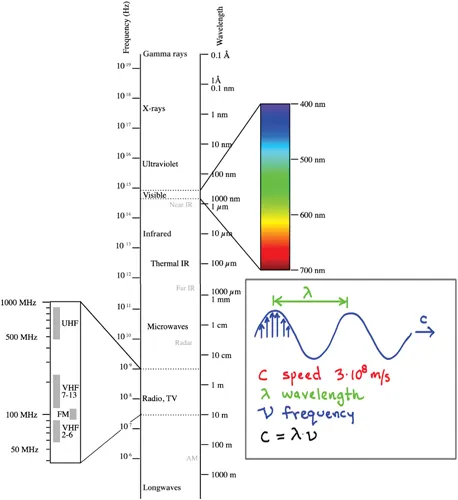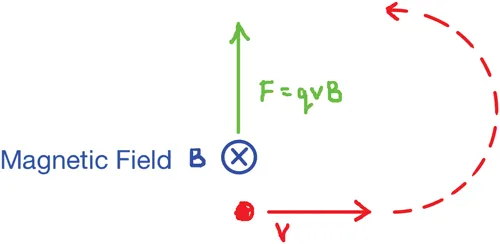
eBook - ePub
Primer on Radiation Oncology Physics
Video Tutorials with Textbook and Problems
Eric Ford
This is a test
Share book
- 356 pages
- English
- ePUB (mobile friendly)
- Available on iOS & Android
eBook - ePub
Primer on Radiation Oncology Physics
Video Tutorials with Textbook and Problems
Eric Ford
Book details
Book preview
Table of contents
Citations
About This Book
Gain mastery over the fundamentals of radiation oncology physics! This package gives you over 60 tutorial videos (each 15-20 minutes in length) with a companion text, providing the most complete and effective introduction available. Dr. Ford has tested this approach in formal instruction for years with outstanding results. The text includes extensive problem sets for each chapter. The videos include embedded quizzes and "whiteboard" screen technology to facilitate comprehension. Together, this provides a valuable learning tool both for training purposes and as a refresher for those in practice.
Key Features
- A complete learning package for radiation oncology physics, including a full series of video tutorials with an associated textbook companion website
- Clearly drawn, simple illustrations throughout the videos and text
- Embedded quiz feature in the video tutorials for testing comprehension while viewing
- Each chapter includes problem sets (solutions available to educators)
Frequently asked questions
How do I cancel my subscription?
Can/how do I download books?
At the moment all of our mobile-responsive ePub books are available to download via the app. Most of our PDFs are also available to download and we're working on making the final remaining ones downloadable now. Learn more here.
What is the difference between the pricing plans?
Both plans give you full access to the library and all of Perlego’s features. The only differences are the price and subscription period: With the annual plan you’ll save around 30% compared to 12 months on the monthly plan.
What is Perlego?
We are an online textbook subscription service, where you can get access to an entire online library for less than the price of a single book per month. With over 1 million books across 1000+ topics, we’ve got you covered! Learn more here.
Do you support text-to-speech?
Look out for the read-aloud symbol on your next book to see if you can listen to it. The read-aloud tool reads text aloud for you, highlighting the text as it is being read. You can pause it, speed it up and slow it down. Learn more here.
Is Primer on Radiation Oncology Physics an online PDF/ePUB?
Yes, you can access Primer on Radiation Oncology Physics by Eric Ford in PDF and/or ePUB format, as well as other popular books in Medicine & Oncology. We have over one million books available in our catalogue for you to explore.
1
Basic Physics
1.1 Waves and Particles
1.1.1 Electromagnetic Waves
Electromagnetic waves come in many forms, e.g. radio waves, lights, and X-rays. In 1870, James Clerk Maxwell developed a formalism to describe these electromagnetic waves in which the changing magnetic field creates an electric field and vice versa to form a self-sustaining wave that propagates at a speed given the symbol c, the speed of light, which is 3·108 m/s in a vacuum. Three properties describe waves: the speed, c, wavelength, λ, and frequency, ν (sometimes written as f ). See Figure 1.1.1. These are related by

Properties of electromagnetic waves.
| (1.1) |
The units are c (m/s), λ (m), and frequency, ν (1/s given the special unit Hertz, Hz). The type of wave is determined by the wavelength (or equivalently the frequency), see Figure 1.1.1. Note that optical light occupies a relatively narrow range of the spectrum from 400 to 700 nanometers (nm).
At very short wavelengths electromagnetic waves are X-rays. X-rays were first produced and characterized by Wilhelm Roentgen in 1895. They have a wavelength similar to the size of the atom itself. It is more common to describe these waves by their energy instead of their wavelength. The energy, E, is given by
| (1.2) |
Here h is Planck’s constant, a fundamental constant of nature whose value is 6.626·10−34 m2 kg/s. A common unit for energy useful for medical physics applications is the electron-volt, eV, which is the energy gained by one electron moving through a potential of one volt. X-rays and particles in medical physics applications often have energies in keV to MeV range.
1.1.2 Particles
The various particles of importance for medical physics applications are shown in Table 1.1 The electron was first discovered by J.J. Thompson in 1897. Somewhat later, in 1908, Robert A. Millikan and Harvey Fletcher performed a series of experiments which showed that the charge of the electron is quantized, i.e. is present discrete amounts. These experiments involved suspending oil drops in an electric field (see the video for further background). The charge of the electron, we now know, is 1.602·10−19 Coulombs (C).
Another important property of particles is their electric charge. One way to measure this is to measure the charge-to-mass ratio. Then, if the mass is known, the charge is known. The charge-to-mass ratio can be found by measuring the movement of a particle through a magnetic field. Any charged particle moving in a magnetic field experiences a force perpendicular to its motion (Figure 1.1.2) given by F = qvB, where q is the charge, v is the speed, and B is the magnetic field. This force bends the particle into a curved trajectory. The force on a charged particle moving in a magnetic field will have various practical applications in medical physics and forms a key concept.

Force on a moving charged particle in a magnetic field, B.
Table 1.1 shows the masses of the various particles. Note that because of Albert Einstein’s energy–mass equivalence, E = mc2, the rest mass of a particle can be written either as a mass (e.g. kg) or as an energy (e.g. MeV). Note that the mass of a proton is nearly 2000 times that of an electron, a fact that will have many implications for radiation therapy physics.
TABLE 1.1
Fundamental Particles of Importance in the Radiation Therapy Context
Fundamental Particles of Importance in the Radiation Therapy Context
Particle | Symbol | Charge | Rest Mass Energy (E = mc2) |
Electron | e− | − | 0.511 MeV |
Positron (antipar... |